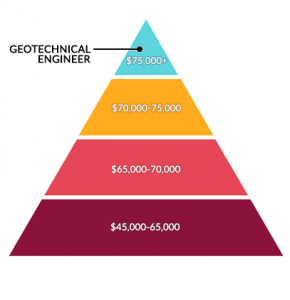The 7-Minute Rule for Geotheta
Table of ContentsNot known Facts About GeothetaGeotheta - An OverviewNot known Facts About GeothetaFacts About Geotheta Revealed
They work together with civil designers, structural engineers, architects, and various other professionals to incorporate geotechnical factors to consider right into the general task style and building and construction procedure. This calls for effective team effort, control, and interaction to guarantee that the geotechnical aspects straighten with the job purposes and satisfy governing requirements.Mining & Products Design: Concepts of boring, penetration prices, and elements influencing the option of drilling technique. Characteristics of explosives, shooting systems and blast patterns. Blasting strategies in surface and underground functions. Special blowing up methods at excavation perimeters. Resonance and noise control. Mechanical and constant methods to fragmentation, including longwall shearing and fullface boring.
Modelling of piece and bit dimension circulations; comminution as a transfer feature. Comminution modern technology: squashing, grinding, dimension category. Integrated analysis of fragmentation and comminution procedures. Offered by: Mining & Products Design.
Some Known Facts About Geotheta.
Bachelor's level programs in civil, geotechnical, geological, and ecological engineering commonly last 4 years and consist of general education and learning courses in English, social scientific research, and the liberal arts, as well as courses in advanced maths, structural geology, and liquid mineralogy. (http://peterjackson.mee.nu/where_i_work#c2299)
Geotechnical design entails the analysis of the dirt and rock problems at a particular website, and their ramifications for the growth of that website. As the majority of structures rely on the ground for assistance, it is without shock that an in-depth understanding of the ground problems, and the suitability of foundation systems, are important to the lasting security and efficiency of the building or structure.
Specialising in the examination of geological developments and ground behaviour, geotechnical engineers carry out clinical examinations and screening to understand the impact these geological formations may have on the style and building of building, civil and facilities jobs. This knowledge is essential for the style and construction of structures, roadways, tunnels, dams, bridges, and water system and sewer system.
The geotechnical team at Douglas Allies consistently seek advice from engineers, style engineers, developers, and contractors to make recommendations on design and advancement propositions to make sure that the developed frameworks are suitably created for the ground conditions. The style of footing systems needs to take into consideration the weight of the framework, the capability of the ground to support that weight together with motion tolerances and reliable building.
The Definitive Guide for Geotheta
This job is greatly simplified by the use our Douglas Map geospatial platform which makes this information conveniently available in a very easy to utilize web internet browser interface. A geotechnical engineer will route the drilling of boreholes and examination pits to collect soil and various other samples, and likewise examine surface area features and ground direct exposures to form a geotechnical model of the subsurface conditions.
Relying on the task kind and ground conditions experienced, research laboratory screening might to name a few things examine toughness, compressibility, sensitivity and/or permeability of soil and rock examples. Hereafter data is gathered click and collected, the outcomes are made use of for a geotechnical version of the website, which is generally offered as sections throughout the site.

A geotechnical investigation by nature can only examine the ground conditions at the places drilled or dug deep into. All-natural variants in dirt and rock conditions can happen throughout a site and in between test locations. It is therefore excellent method that the geotechnical designer be kept throughout building of the project to supply on-site verification that the ground problems encountered are constant with the assumptions and advice given in the geotechnical investigation report.
Indicators on Geotheta You Need To Know
Geotechnical engineers use their extensive understanding of dirt and rock to evaluate risk and address issues on varied infrastructure projectsGeotechnical engineering is a specialist branch of civil engineering which checks out the behavior of planet products and the application of soil and rock mechanics. Geotechnical Engineers. As a geotechnical designer, you will assess the physical, mechanical and chemical residential properties of soil and rock in order to make foundations, retaining frameworks and earthworks
Geotechnical engineering is very closely linked to and overlaps with, both engineering geology and ground design - https://hub.docker.com/u/geotheta. It's possible to be experts in geotechnics or work for a geotechnical company but be understood as a design rock hound or a ground designer. As a geotechnical designer, you'll need to: build and maintain partnerships with clients and various other specialists involved in the website, throughout each projectmaintain safety standards on website be mindful of cost implications when you make recommendationsstudy geological maps and airborne photographs from a series of sources and from different time periodsexamine construction plans to see exactly how viable they are based on your understanding of the siteinvestigate dangers or geological threats for the sitesearch for ecologically sensitive features, such as land fill begin to create accurate and expository ground modelsplan field investigationsdrill and evaluate examples of bedrock, dirt, groundwater and added products supervise various other specialists on sitesolve technical concerns as they occur, such as unexpected structures at drill sitesmonitor conditions during and after building to make certain structures are stable in the short and lengthy termadding data gathered on website to your initial researchcreating geotechnical computations, drawings, and 2 or three-dimensional computer system designs interpreting the datamaking referrals concerning the suggested use the website
